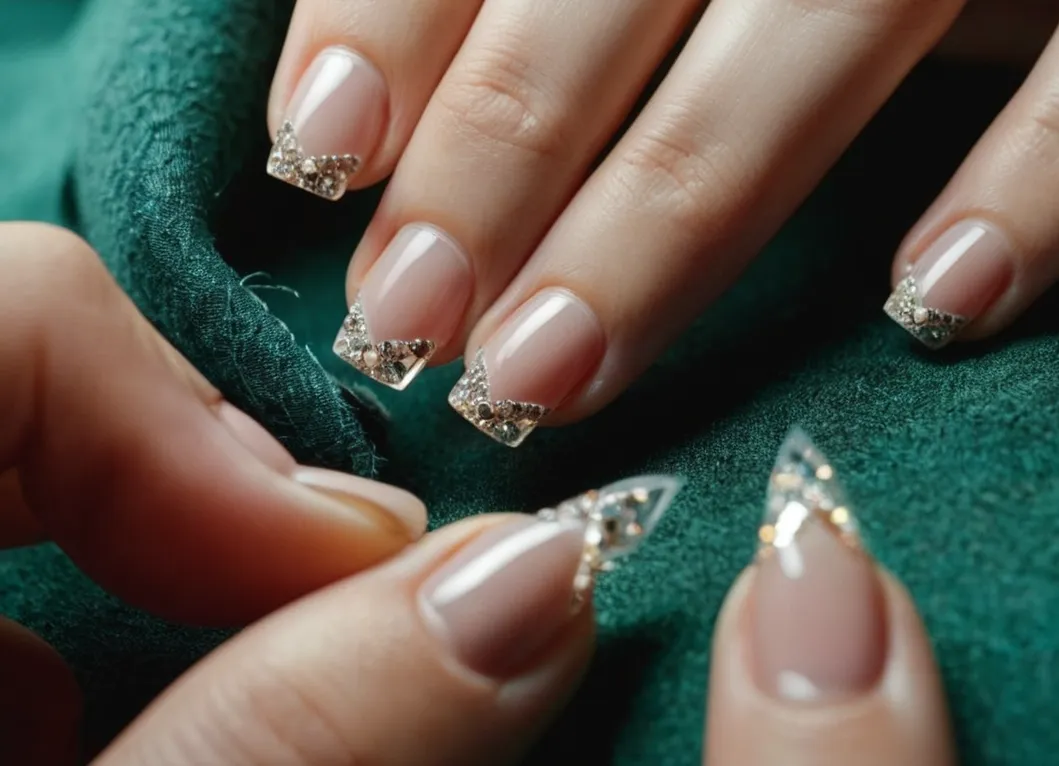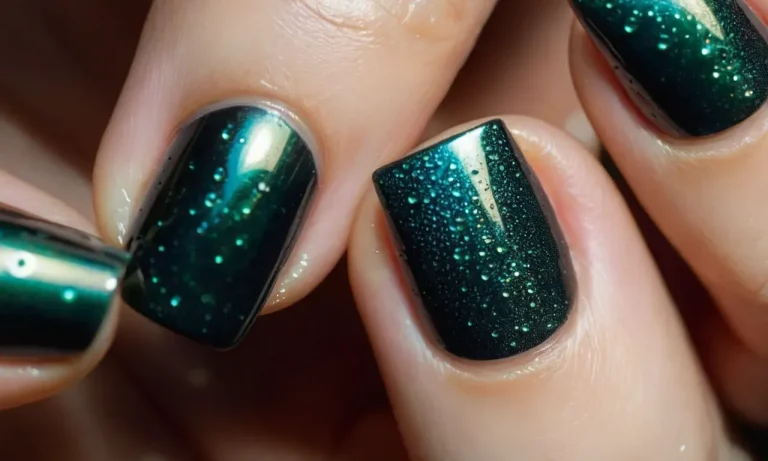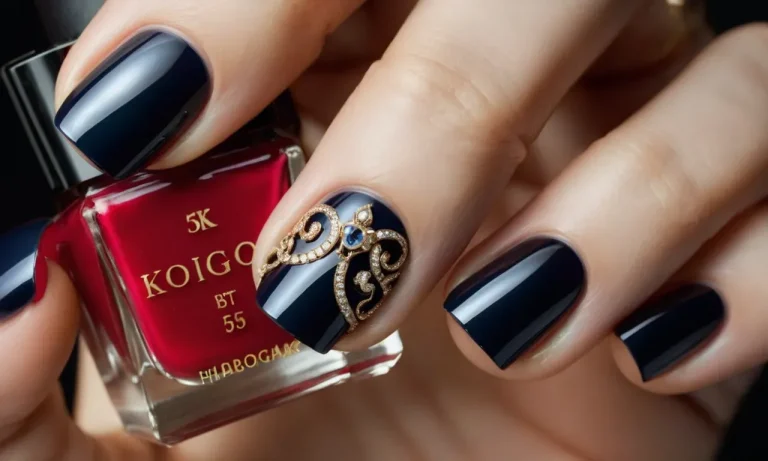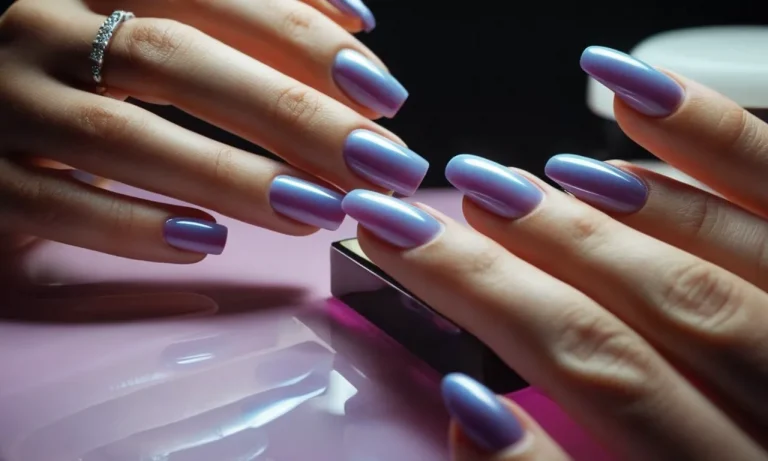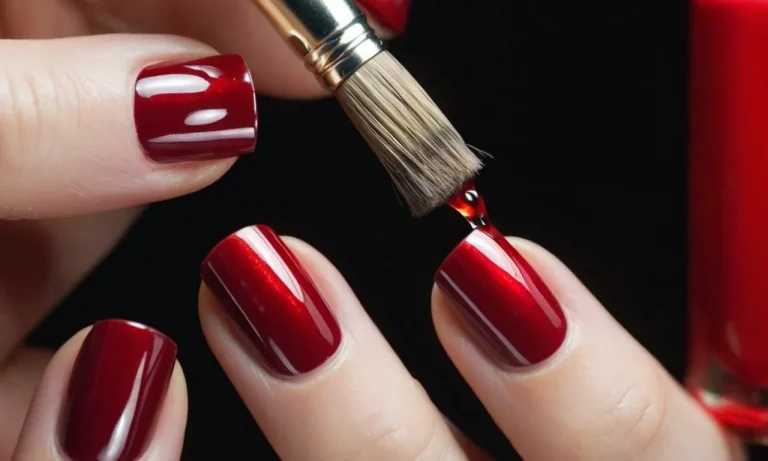How To Fix A Broken Nail Without A Tea Bag
Dealing with a broken nail can be annoying and even painful. If you don’t have a tea bag on hand, which is a popular home remedy, you may be wondering what to do. The good news is that you have several options to fix a broken nail quickly and easily without a tea bag.
If you need a fast solution, you can trim the nail, file it down, and apply nail glue or a small bandage. To encourage healing and growth, you’ll also want to moisturize and take care of the nail.
Trim and File the Broken Nail
Cut it Straight Across
When you have a broken nail, it’s important to trim it properly to help it heal and grow back strong. Here are some tips for cutting a broken nail straight across:
- Start by washing your hands and cleaning the nail. This removes any dirt or debris so you can see the break clearly.
- Trim the nail straight across using nail clippers or scissors. Don’t cut it too short – leave a small white tip of nail remaining.
- File the edge smooth using an emery board or nail file. File in one direction only to prevent further snags or breaks.
- If the break splits the nail vertically, trim each side straight across to remove the split portion. Don’t round off the corners.
- Trim carefully and slowly. Don’t rush this step or you could worsen the split or create jagged edges.
Cutting the nail straight across helps create a clean edge that will heal smoothly and grow out better. Rounding the edges can weaken them and lead to further splitting. Take your time and use sharp clippers or scissors for the cleanest cut.
Smooth Out Rough Edges
Once you’ve trimmed your broken nail, it’s important to file and buff the edges to help seal the nail and prevent snagging, tearing or more breaks. Here’s how to smooth and shape the nail:
- Use a fine-grit emery board or nail file. Gently file from the corner to the center in one direction only.
- Don’t file back and forth or you could weaken the nail edge. Use light, short strokes filing from the outer corner in.
- File and shape the tip so it follows the natural contour of your finger. File the sides straight, not rounded.
- Buff the nail tip in one direction to seal and smooth the keratin layers. This helps strengthen the nail.
- Avoid using metal nail files or sanding bands as these can damage the nail bed over time.
Filing and buffing the trimmed nail edge helps seal the layers of keratin together for added strength and prevents painful snags. Take care to file gently in one direction only. This helps the nail heal smoothly and resume normal growth.
Apply Nail Glue or Bandage
Use Super Glue or Nail Glue
One of the easiest ways to temporarily fix a cracked or broken nail is by applying some super glue or nail glue to bond the pieces back together. According to the American Academy of Dermatology Association (https://www.aad.org/public/everyday-care/nail-care-secrets/fix-broken-nails), super glues formulated for nails can quickly mend cracks or breaks in just a few seconds.
When using these glues, gently file or buff away any jagged edges first. Then apply a small amount, wait 30 seconds for it to set, and file over the area to smooth it.
Many people use super glues not formulated specifically for nails, but experts warn that these may irritate skin or damage the nail plate. Specialized nail glues like brush-on formulas by beauty brands contain additional ingredients to condition nails and accelerate healing.
According to market research from Mordor Intelligence (https://www.mordorintelligence.com/industry-reports/global-nail-glue-market-industry), the global nail glue market size was valued at $27.5 million in 2021, indicating a growing demand for effective nail repair products.
Try a Small Bandage or Tape
If the nail break extends down close to the cuticle or involves a complete split of the nail plate, gluing may not be enough. An alternative is to cover the damaged area with a small adhesive bandage or medical tape.
The American Osteopathic College of Dermatology (https://osteopathic.org/what-is-osteopathic-medicine/aoa-health-wellness-information/health-tips-for-the-public/nail-care-tips) says to carefully trim off any jagged edges with clean nail clippers or a file.
Then apply the bandage or tape, wrapping it under the tip of the nail to pull the sides together.
This technique protects the tender nail bed underneath while also keeping dirt and debris out of the crack or split as it heals. According to doctors on WebMD (https://www.webmd.com/skin-problems-and-treatments/ss/slideshow-nail-care-dos-donts), most small nails breaks heal within a few weeks.
Just replace the bandage or tape every few days while being careful not to catch or snag the nail in clothing or fabrics. Larger splits that comprise the entire nail plate may require up to 6 months to regrow completely.
Moisturize and Nurture the Nail
Use a Nail and Cuticle Oil
Applying a nail and cuticle oil is a great way to moisturize and nourish your nails after a break (around 600 words). The oil can help repair damage and improve the appearance of your nails. Look for an oil that contains moisturizing ingredients like vitamin E, aloe vera, and essential oils.
Gently massage a few drops into each nail and cuticle twice daily. This helps soften cuticles and hydrate the nail bed, promoting healthy nail growth. Popular oils for broken nails include coconut oil, olive oil, and jojoba oil.
Consider a Nail and Cuticle Cream
For very dry, brittle nails, a thicker nail and cuticle cream may be more effective than an oil. Creams create a protective barrier that seals in moisture. Shea butter and lanolin are common emollients in these creams.
Apply a small amount around each nail and massage into cuticles once or twice per day. The American Academy of Dermatology recommends looking for a cream with ceramides, which help restore the nail’s protective lipid barrier.
Avoid Picking or Biting
It can be tempting to pick at or bite your nails when they’re damaged, but this will only worsen the problem. Picking can pull the nail away from the nail bed, increasing the risk of infection. Biting puts more stress on already fragile nails. Try to keep your hands busy to avoid mindless picking.
If you catch yourself biting or picking, gently remind yourself to stop. Apply a bitter-tasting nail polish or cover fingertips with bandages as a deterrent if needed. Improving nail moisture and health will make your nails less tempting to bite or pick at.
With some TLC in the form of moisture and nourishment, your broken nail can be restored to its former health and beauty. Consistently applying nail oil or cream and avoiding further damage from picking can get your nail back on track. Be patient as your nail grows out and regains its strength.
Before you know it, you’ll be sporting long, strong nails once again!
Conclusion
Dealing with a broken nail without the traditional tea bag remedy may seem challenging. However, by trimming, filing, gluing, bandaging, moisturizing, and letting the nail grow out, you can get it looking better again. With some TLC, your nail will be restored to its former glory in no time.

